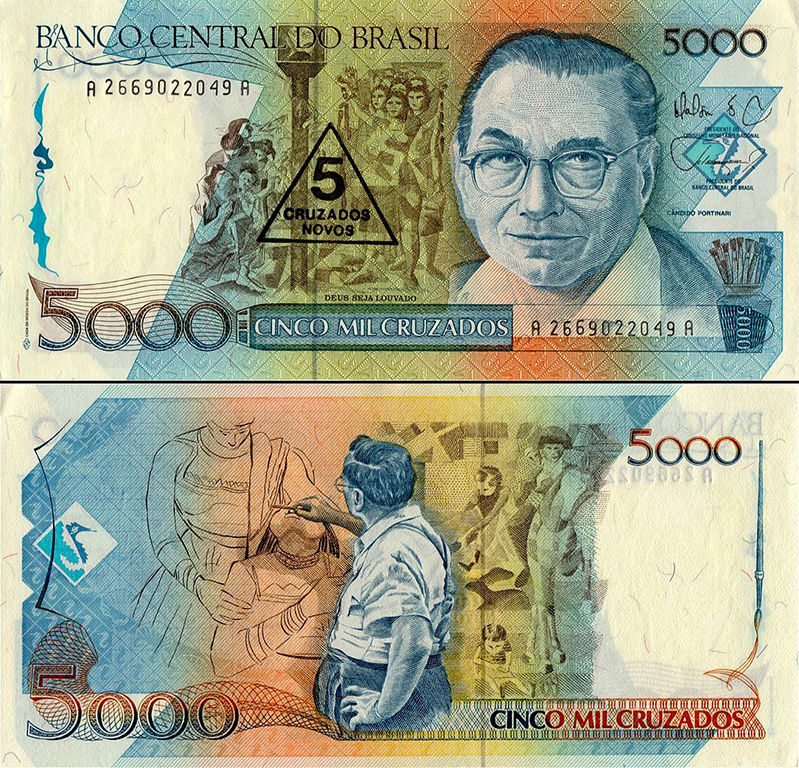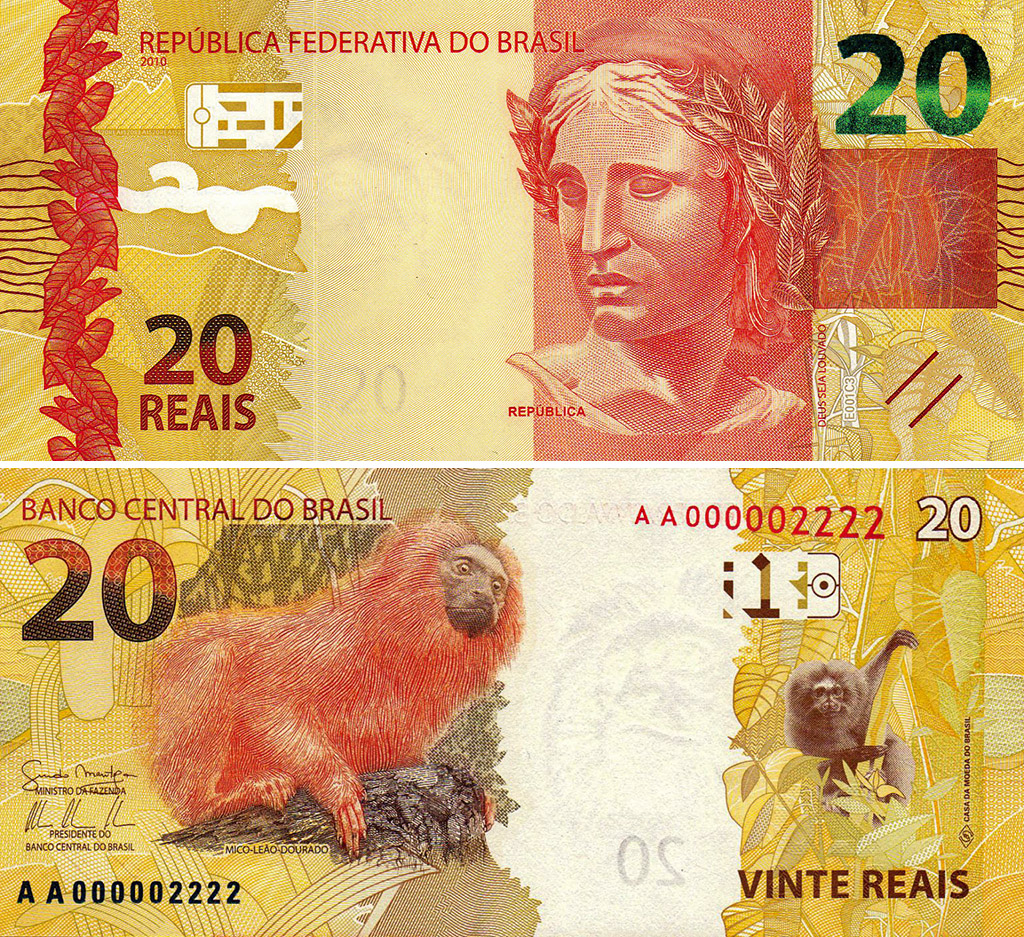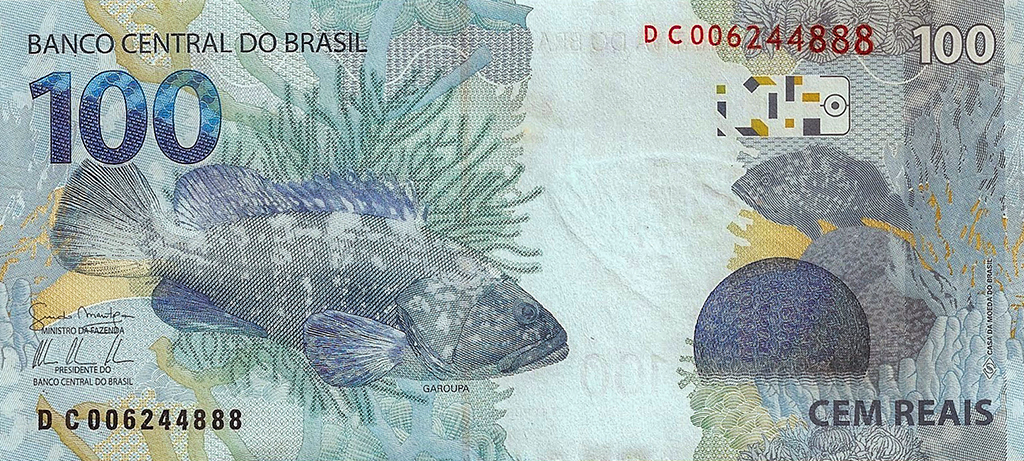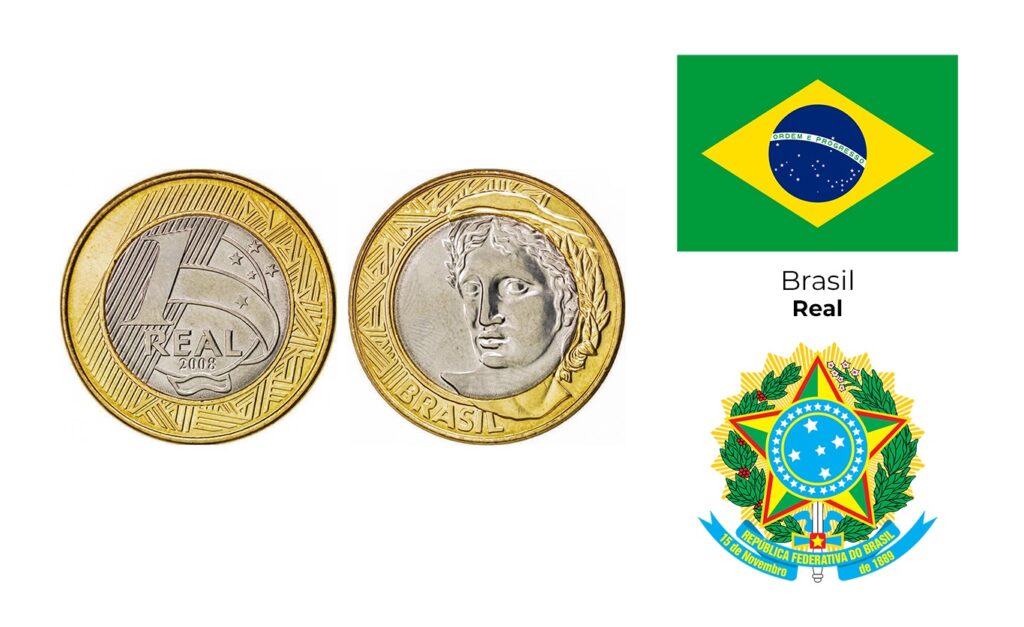
The rumpus of the bemused Brazilian Real
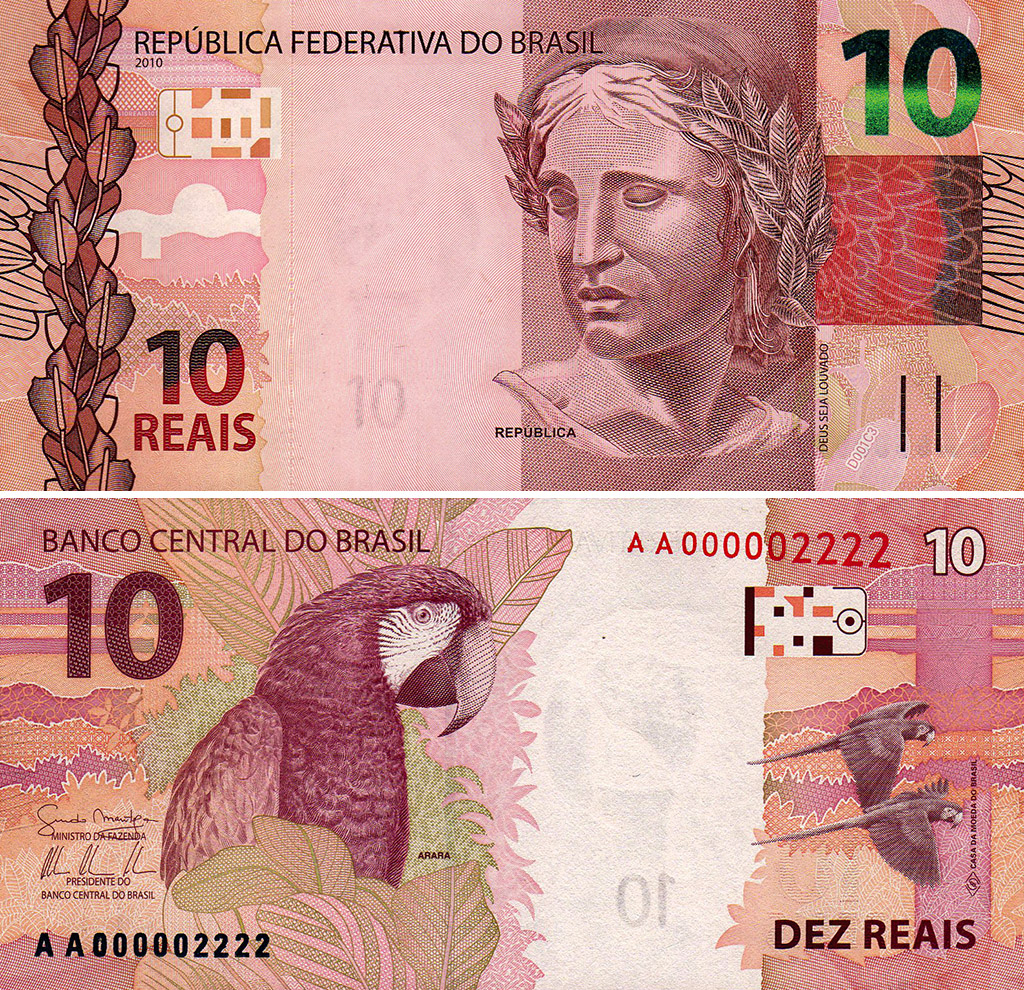
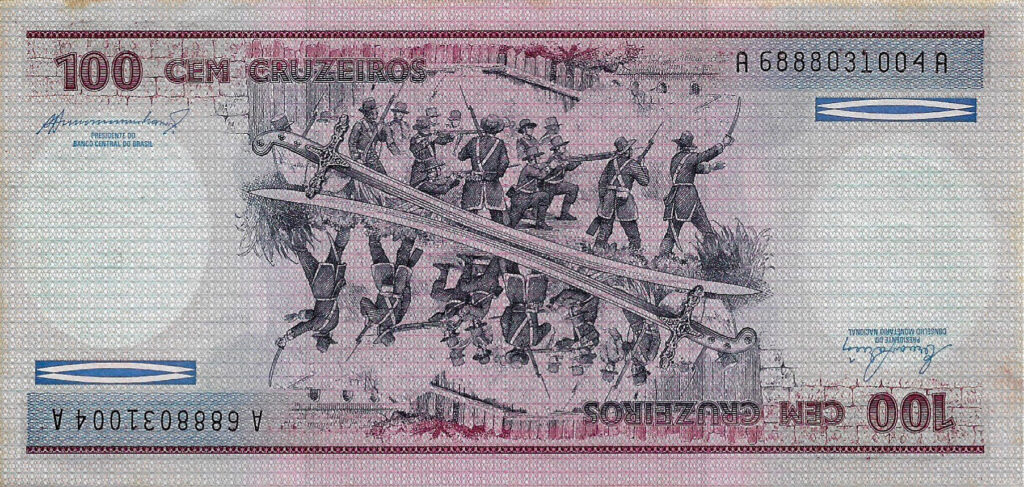
Spread over a sprawling landmass – in central continental South America and a number of oceanic archipelagos, Brasil is huge in size. With its humongous proportions – largest in South America and 5th largest globally – Brasil is home to a host of ethnic identities. Influx of immigrants during the colonial rule for over a century has made this erstwhile Portuguese colony one of the most ethnically diverse. In addition to the majority of Amerindians, Europeans, and Africans, Brasil also has the largest uncontacted tribal populace (67 tribes in all). Brasil’s natural history is equally enthralling; a mega diversity Brasil covers a great range of ecological habitats within its national boundaries. The landmass was originally divided into numerous tribal kingdoms that was captured by Portugal in 1500 CE. By 1815 CE, the colony was named as a Kingdom. Independence was declared by 1822 CE and a constitution was put in place by 1824 CE. Brasil has a mixed economy with Agriculture, Mining, Manufacturing and Service as main constituents; as a bread basket, it produces a range of edible commodities while the manufacturing industry is well-developed.
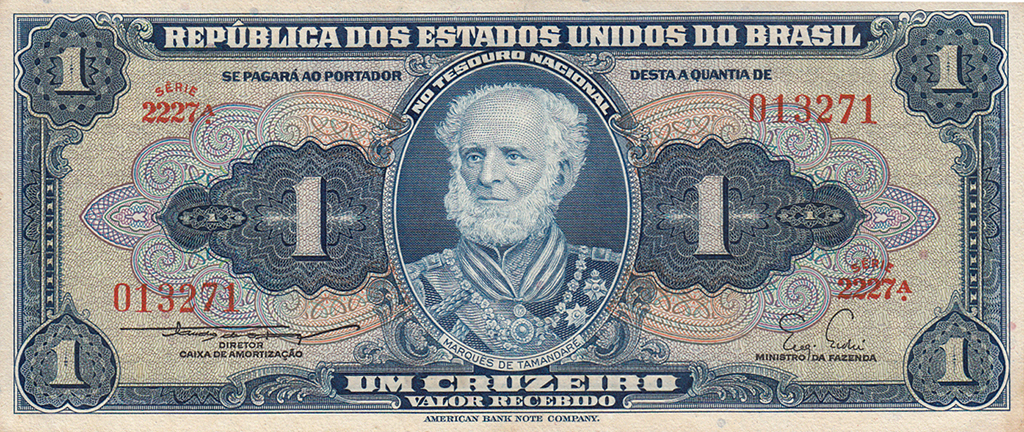
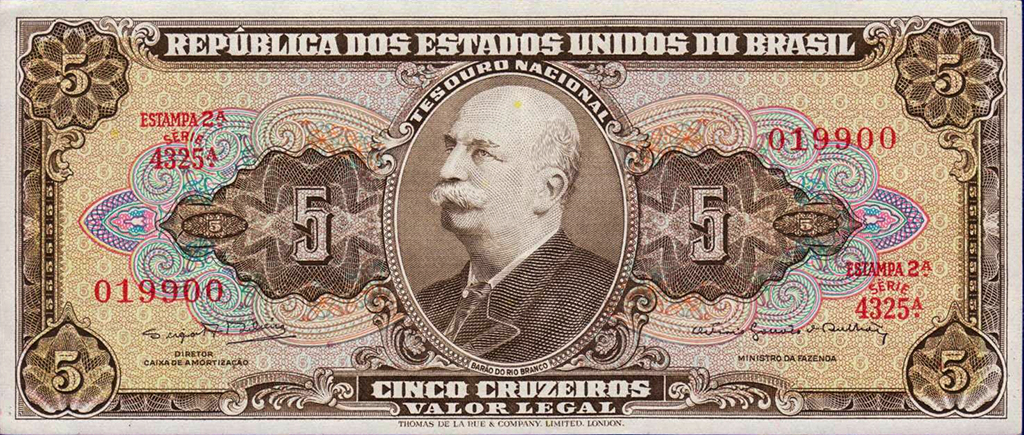
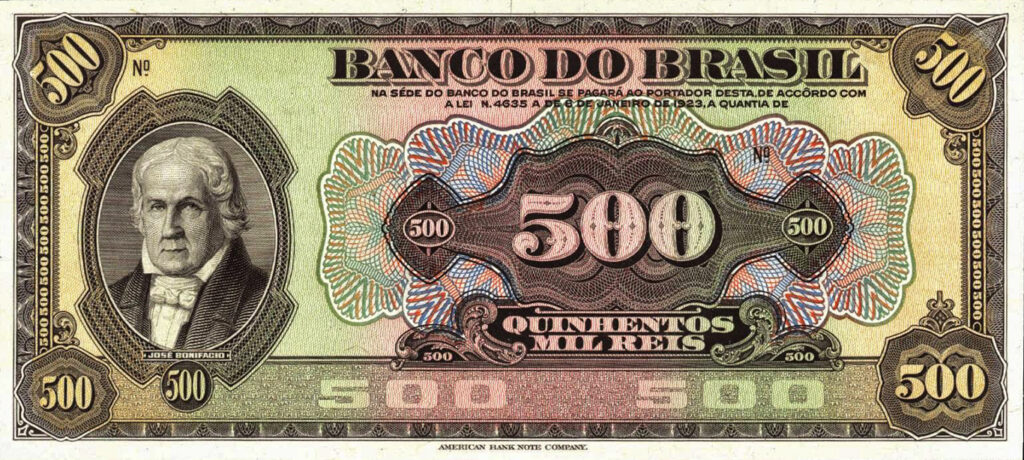
Brasil saw its first banknotes sometime around the end of 18th Century. Around this time, the money matters were mostly controlled by private banks such as Banco do Brazil (1853–1890), Banco do Maranhão (1857–1885) and Banco da República dos Estados Unidos do Brasil (1890–1892). Banks were formed and dissolved frequently; need for a proper banking establishment was urgently felt. Finally, Banco do Brazil that wasstarted in 1808 CE took lead. It passed on the baton to the current central authority – Banco Central do Brazil – in 1964 CE. The currency also underwent a lot of changes; from the colonial Real to “Brazilian” Real in 1822; to Cruzeiro in 1942; Cruzeiro (novo) in 1967; Cruzeiro (second) in 1970; Cruzado in 1986; Cruzado (novo) in 1989; Cruzeiro (third) in 1990; Cruzeiro Real in 1993; and finally Real (modern) in 1994. Two series of banknotes have been issued afterwards, First Series between 1994-2010 and Second Series in 2010. Brasil also has a world-class printer of its own – Casa da Moeda do Brazil – at Rio de Janeiro, the best in the whole of South America.
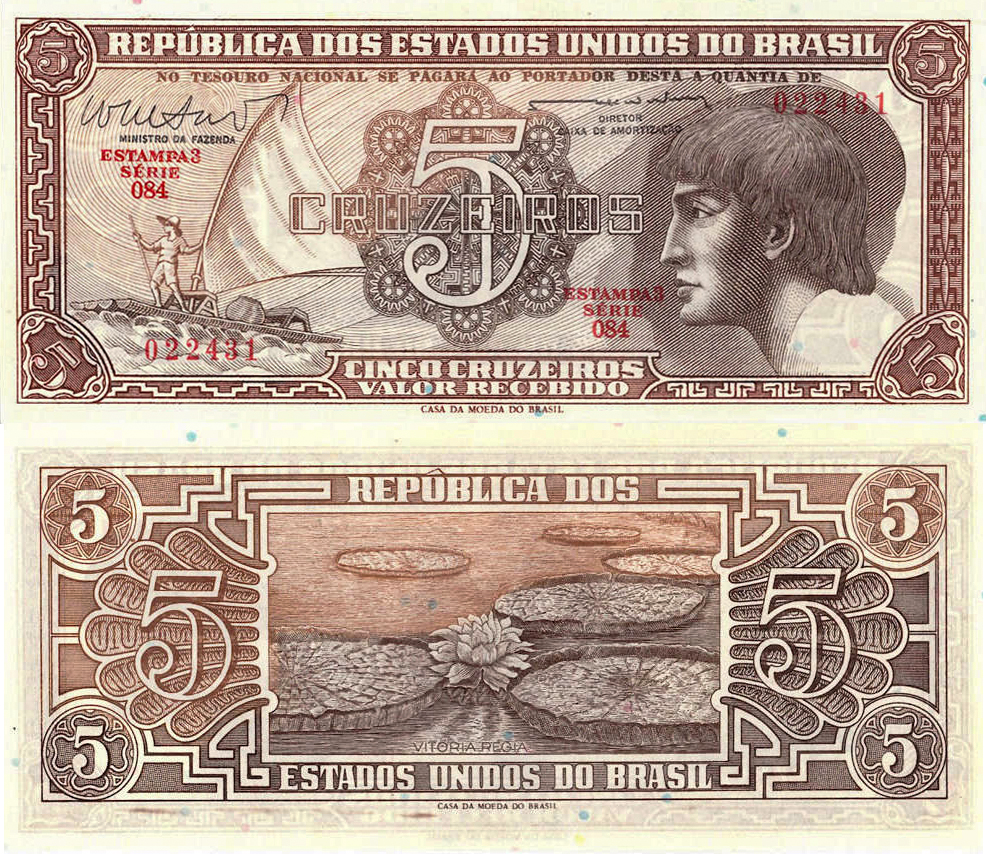
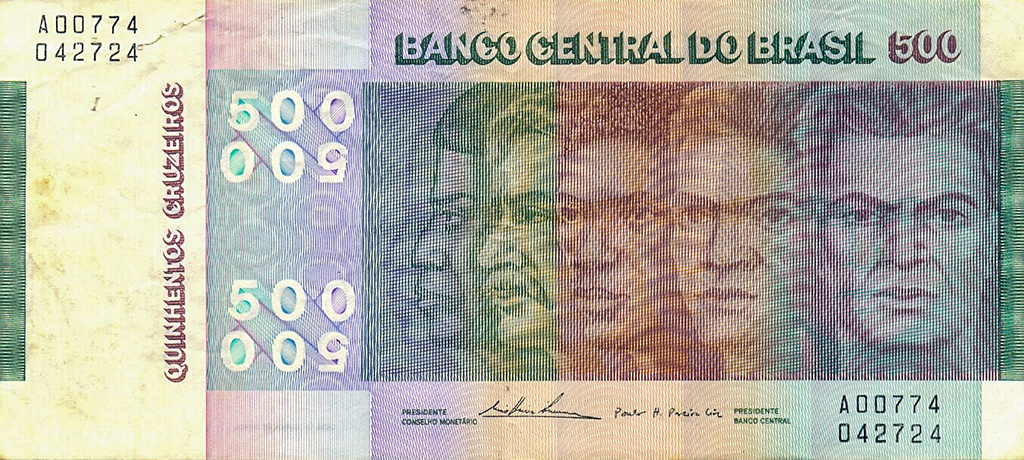
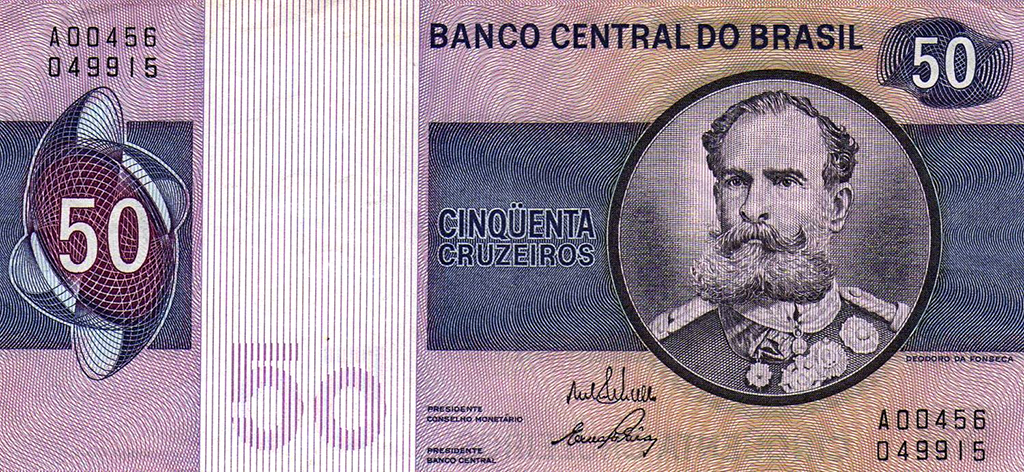
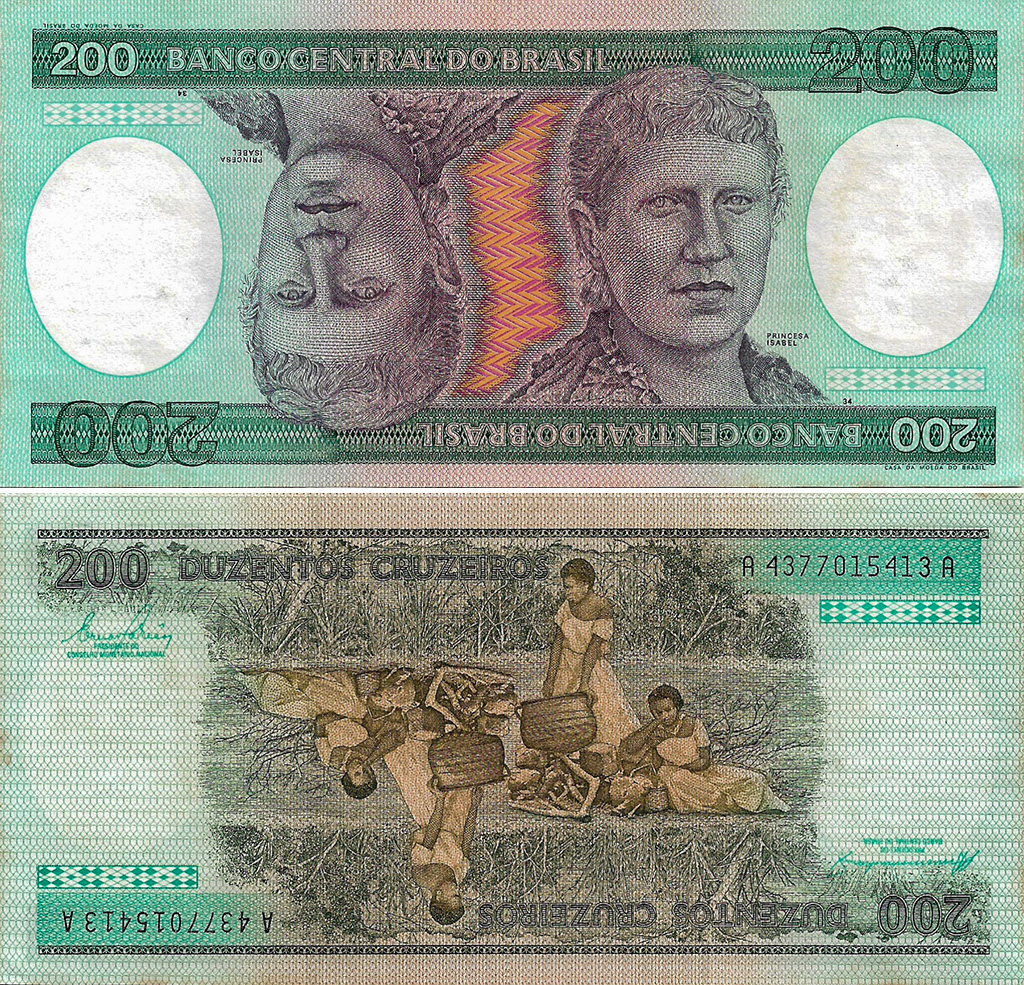
Main Features | The Brazilian Banknotes of 1984 incorporating rare visual symmetry along the landscape layout were way ahead of their times. The 2010 Series is a soothing set of Banknotes depicting the natural paradises along with their denizens. Set in a horizontal layout, the face is vertically divided into spaces with (i) numerals for denomination at two diametrically opposite corners, (ii) texts for “Republica Federativa Do Brasil” at top left, and Reais at left bottom, (iii) images include a primary depiction of Republica against a shaded background composed with graphic elements drawn from the banknote theme in line with the reverse. On the back, there are (i) numerals for denomination at top corners, Serial number in both horizontal and vertical alignment, (ii) texts for Banco Central Do Brasil at top left, designation of two signatories, denomination in words at right bottom and (iii) images arranged in a homogenous manner unlike the observe with one primary image in company of 2-3 secondary images wrapped in background composed from patterns.
